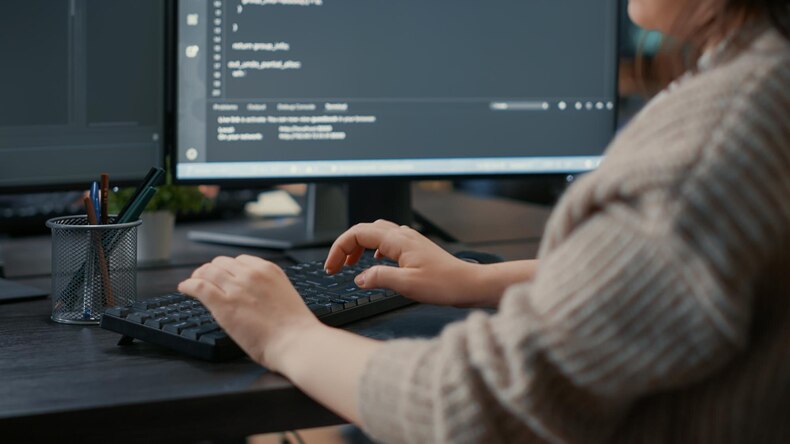The film industry has always been a playground for innovation. As technology advances, so does the creative landscape of cinema. At the forefront of this evolution is artificial intelligence (AI). It’s not just a buzzword; it’s reshaping how films are made, especially in areas like special effects and stunt coordination.
Imagine directors harnessing AI to craft breathtaking visuals or choreograph thrilling action sequences with precision. This isn’t science fiction—it’s happening right now! The integration of AI into filmmaking offers endless possibilities, pushing boundaries that filmmakers once thought were insurmountable. Dive into the world where imagination meets cutting-edge technology, and explore how AI is transforming our cinematic experiences forever.
The use of AI in special effects and stunt coordination
Artificial Intelligence is revolutionizing the landscape of special effects and stunt coordination in filmmaking. Its ability to analyze vast amounts of data allows filmmakers to create visually stunning scenes that were once impossible.
AI algorithms can predict how digital characters will interact with real-world environments, enhancing realism. This technology helps artists craft intricate details that breathe life into CGI elements.
In stunt coordination, AI can simulate complex action sequences. By analyzing past performances and safety protocols, it optimizes each move for both impact and safety.
Moreover, directors now rely on AI-driven software for pre-visualization. They can see potential shots before they’re even filmed, allowing for more efficient planning.
As a result, creativity flows unhindered while ensuring the safety of actors during high-octane stunts. The synergy between human talent and AI tools paves the way for unprecedented cinematic experiences.
Advancements in CGI and motion capture technology
CGI and motion capture technology have seen remarkable progress in recent years. Enhanced algorithms allow for more lifelike animations, blurring the line between reality and imagination.
High-definition cameras now track every nuance of an actor’s performance. This precision captures subtle facial expressions and body movements, enriching character portrayal.
Additionally, AI-driven software streamlines the animation process. Artists can create complex scenes with fewer resources while maintaining stunning detail.
Real-time rendering has revolutionized the way filmmakers visualize their projects during production. This instant feedback loop enables directors to make immediate adjustments on set.
As a result, audiences experience more immersive storytelling than ever before. The evolution of these technologies continues to push creative boundaries within the industry, paving new pathways for visual experiences.
How AI is changing the game for stunts and action scenes
AI is revolutionizing the way stunts and action scenes are planned and executed. With advanced algorithms, filmmakers can simulate complex stunts before they hit the set. This means safer practices and more precise choreography.
Moreover, AI analyzes vast amounts of data from previous films to predict which actions will resonate with audiences. It helps in crafting sequences that are not only thrilling but also emotionally engaging.
The use of AI-driven motion capture technology allows for real-time adjustments during filming. Creators can tweak performances on-the-fly, enhancing realism without sacrificing safety.
Additionally, virtual stunt doubles powered by AI provide new options for directors. These digital performers can execute high-risk maneuvers without fear of injury, opening doors to unprecedented cinematic possibilities.
As a result, both creativity and safety soar to new heights in modern filmmaking.
Case studies of successful AI implementation in special effects and stunts
One of the standout examples of AI in action is found in the film “Avengers: Endgame.” The integration of machine learning algorithms helped streamline CGI processes, creating lifelike characters and environments. This technology reduced rendering times significantly.
Another noteworthy case is from “The Matrix” series. Here, AI-assisted simulation tools were used to choreograph complex fight scenes. These digital twins allowed directors to visualize stunts before filming, ensuring safety and precision.
In “Gemini Man,” advanced motion capture combined with AI-generated imagery brought a younger Will Smith back to life on screen. The seamless blending of real and virtual performances captivated audiences while showcasing the potential for future storytelling.
These cases highlight how innovative technologies are shaping visual effects and stunt work, pushing boundaries that seemed unimaginable just a few years ago. Each project not only enhances the viewer’s experience but also makes filmmaking safer for actors involved in high-risk stunts.
Conclusion
The integration of AI in the film industry is transforming how special effects and stunt coordination are approached. As technology evolves, filmmakers are finding new ways to enhance storytelling through stunning visuals and thrilling action sequences.
Through advanced CGI and motion capture techniques, AI enables artists to create lifelike characters and realistic environments. This not only saves time but also allows for more creativity in designing spectacular scenes that captivate audiences.
AI’s influence on stunts goes beyond visual effects. It optimizes choreography by analyzing movements and predicting outcomes, ensuring safety while pushing creative boundaries. The results speak for themselves with films showcasing breathtaking action that keeps viewers on the edge of their seats.
Case studies reveal a growing trend where studios successfully implement AI tools into their workflows. These innovations highlight the potential of merging human artistry with machine intelligence, leading to groundbreaking cinematic experiences.
As we move forward, it’s clear that AI will continue shaping the landscape of filmmaking. Its impact resonates across various aspects of production, driving progress in both special effects and stunt coordination like never before.
